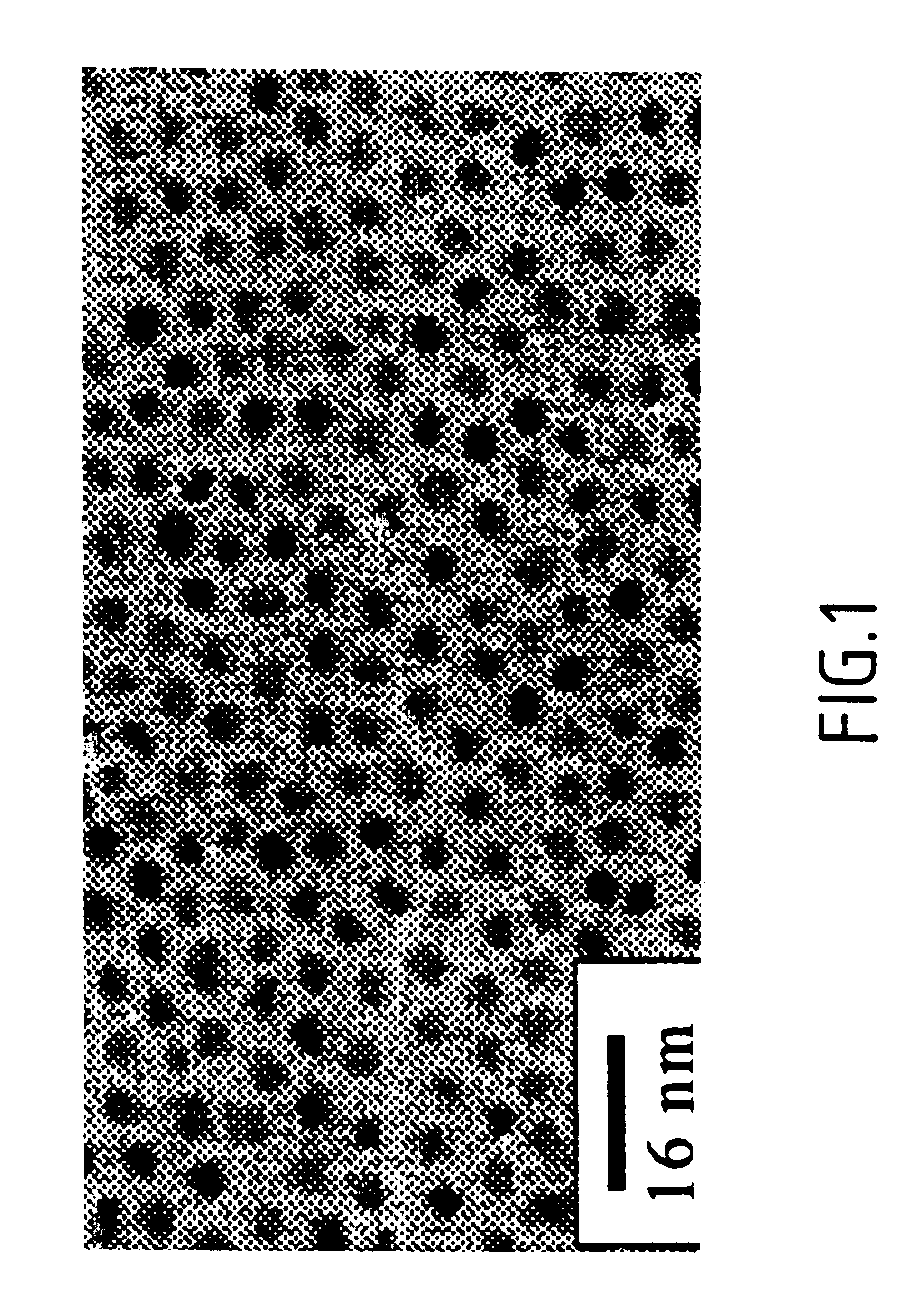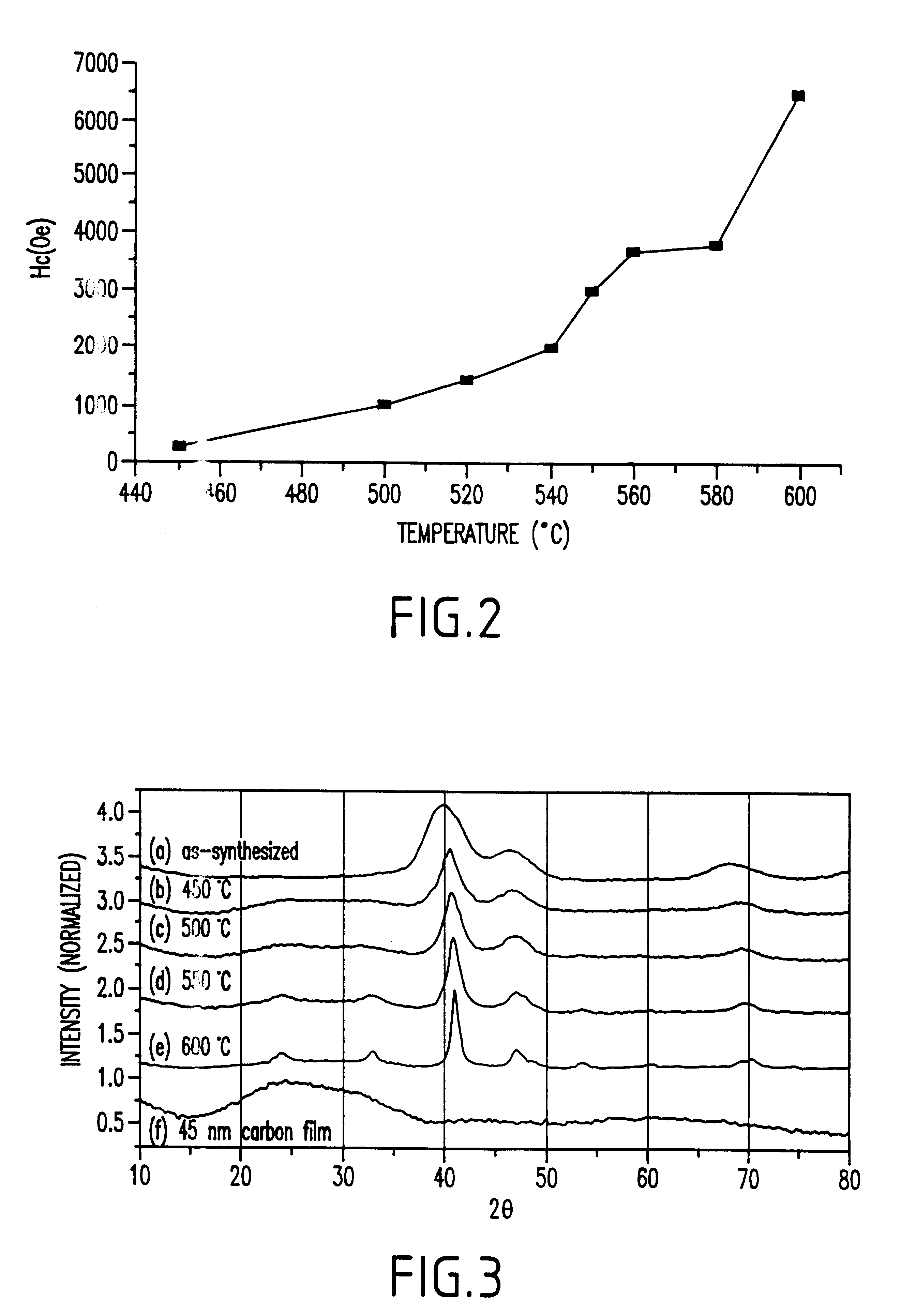Chemical synthesis of monodisperse and magnetic alloy nanocrystal containing thin films
a technology of magnetic alloy nanocrystals and monodisperse, which is applied in the direction of blast furnace details, magnetic bodies, furnaces, etc., can solve the problems of limited scaling approach and little control over particle size or size distribution
- Summary
- Abstract
- Description
- Claims
- Application Information
AI Technical Summary
Problems solved by technology
Method used
Image
Examples
Embodiment Construction
Long chain diols such as 1,2-octanediol, 1,2-dodecanediol and 1,2-hexadecanediol, etc. have been used previously to reduce metal salts (such as Pt salt, Fe(OCOCH.sub.3).sub.2, Fe(CH.sub.3 COCHCOCH.sub.3).sub.2, Co(OCOCH.sub.3).sub.2, Co(CH.sub.3 COCHCOCH.sub.3).sub.2, etc. ) to metal nanoparticles, (e.g., see Murray et al., co-pending U.S. patent application Ser. No. 09 / 127,005, which is fully incorporated herein by reference). Thermal decomposition of an organometallic compound (such as Fe(CO).sub.5, Co.sub.2 (CO).sub.8, Fe.sub.2 (CO).sub.8, [C.sub.5 H.sub.5 Fe(CO).sub.2 ].sub.2, and (C.sub.5 H.sub.5).sub.2 Fe) is a known procedure to separate the Fe and its oxide particles (e.g., M. O. Bentzon, et al., Phil. Mag. B., 1989, V. 60(2), 169, fully incorporated herein by reference). The invention combines these two chemical reactions (e.g., the reduction of the metal salt and the decomposition of the organometallic compound) in situ to form magnetic alloy particles that have a very con...
PUM
| Property | Measurement | Unit |
|---|---|---|
| temperature | aaaaa | aaaaa |
| temperature | aaaaa | aaaaa |
| temperature | aaaaa | aaaaa |
Abstract
Description
Claims
Application Information
 Login to View More
Login to View More - R&D
- Intellectual Property
- Life Sciences
- Materials
- Tech Scout
- Unparalleled Data Quality
- Higher Quality Content
- 60% Fewer Hallucinations
Browse by: Latest US Patents, China's latest patents, Technical Efficacy Thesaurus, Application Domain, Technology Topic, Popular Technical Reports.
© 2025 PatSnap. All rights reserved.Legal|Privacy policy|Modern Slavery Act Transparency Statement|Sitemap|About US| Contact US: help@patsnap.com



